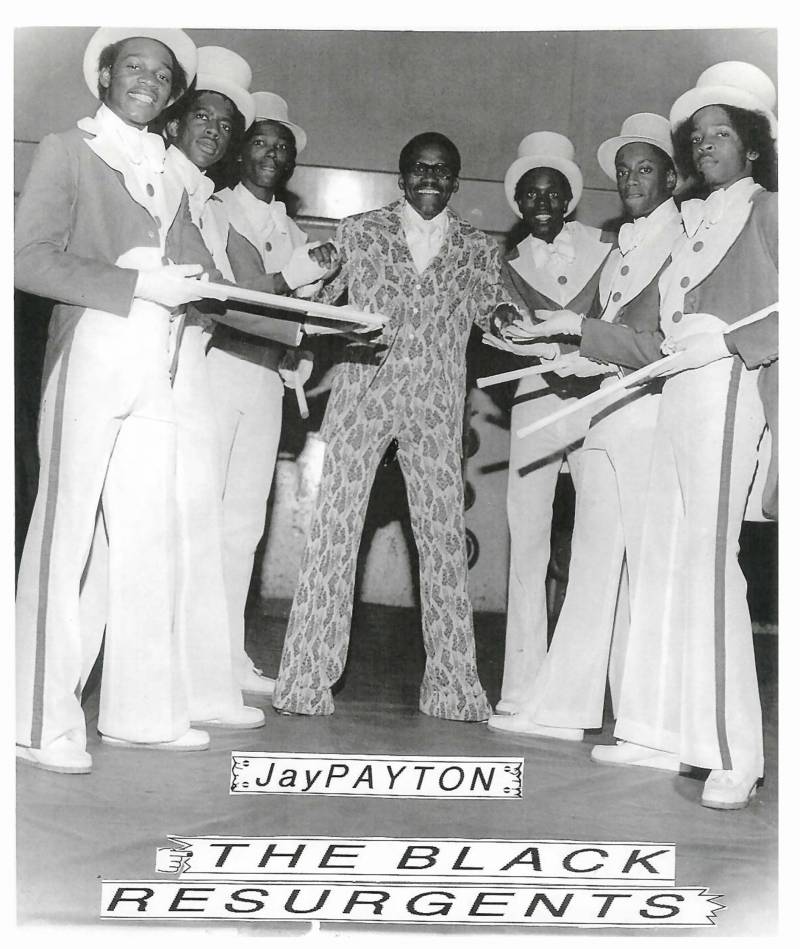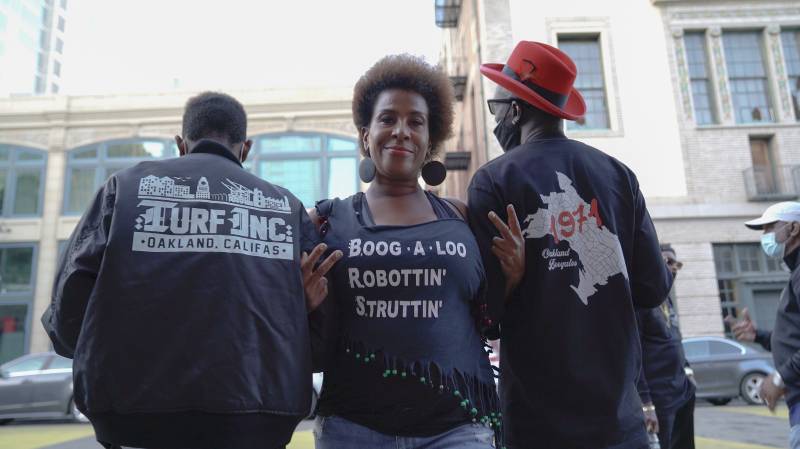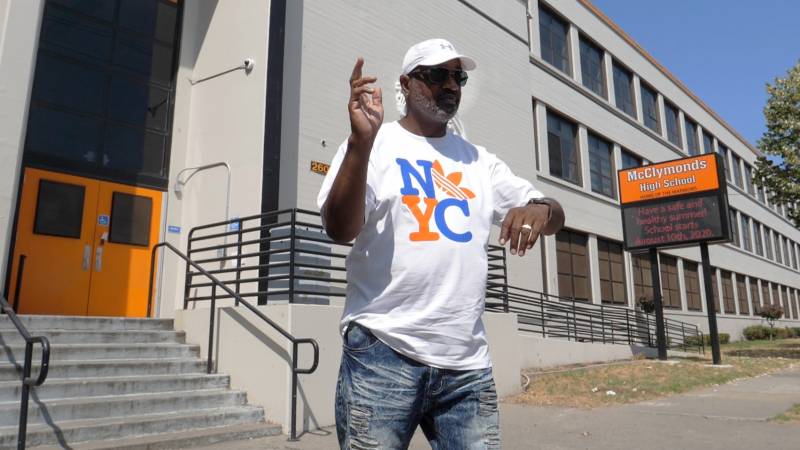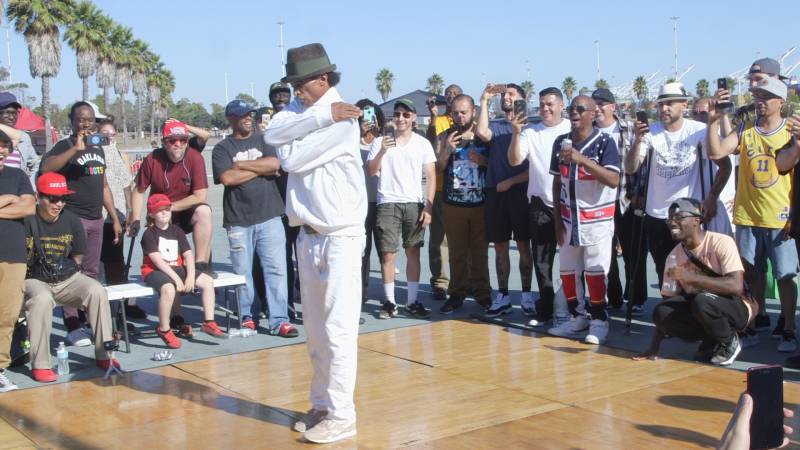You are using an out of date browser. It may not display this or other websites correctly.
You should upgrade or use an alternative browser.
You should upgrade or use an alternative browser.
Bay Area Appreciation Thread
- Thread starter CSquare43
- Start date
More options
Who Replied?Reclaiming the Legacy of Oakland’s Boogaloo Dance Culture | KQED
Editor’s note: This episode was filmed under strict guidelines due to the coronavirus pandemic. Safety parameters were followed to protect the health of the dancers and video production team.
If Cities Could Dance is KQED Arts' award-winning video series featuring dancers across the country who represent their city's signature moves.
Will Randolph was just eight years old when he witnessed something that would change his life forever.
The young East Oakland resident was at a New Years’ Eve party thrown by the Pointer Sisters, his neighbors at the time, marveling at two teenagers moving in an animated fashion, craning their necks and striking poses. Randolph remembers thinking to himself: "What in the world is that?"
That night launched a six decade-long love affair with boogaloo, a dance form invented by African American youth in Oakland. Taking inspiration from James Brown, the Temptations, Charlie Chaplin, cartoon characters, and sci-fi robots, boogaloo innovators created a repertoire of original moves like the “Dime Stop,” the “Hit,” the “Mack Pose,” and the “Ditallion.” San Francisco and Richmond soon developed variants of boogaloo, respectively known as strutting and robottin’.

The Black Resurgents back stage on the Jay Payton Show, a music and dance variety (Courtesy William Randolph, The Black Resurgents)
Today, these techniques are collectively known in the world of hip-hop dance as “the funk styles,” owing to their development during the funk era. As dance historian Traci Bartlow notes, boogaloo preceded the emergence of hip-hop culture, whose name “was not even thought of for another 10 years.”
But despite its pioneering status, boogaloo’s cultural contributions are little-known outside of Bay Area dance circles. That’s why, for the past 20 years, Randolph and other veteran boogaloos have spread the word in an attempt to revive boogaloo, maintain its cultural traditions, and pass them on to a new generation–bridging the gap between boogaloo, pop-locking and contemporary dance forms like turf dancing.
“Turfing in the millennium,” Randolph says, “is what boogaloo was in the ’70s.”
Randolph’s stories of boogaloo’s evolution and development have a folkloric, even legendary, quality. In 1971, while urban renewal and white flight were underway and East Oakland’s population rapidly became predominantly African American, he and a handful of his classmates at Elmhurst Junior High began entering talent show competitions. Inspired by the Black Panthers and the social justice movements of the post-civil rights era, they named themselves the Black Resurgents.
Throughout the 1970s, boogaloo became the preeminent form of African American youth culture in Oakland. Numerous boogaloo groups formed in the East, including the Black Resurgents and their chief rivals, the Black Messengers. Castlemont High School and Arroyo Park became centers for group competitions. Boogaloo culture also spread to West Oakland, where groups like S.S. Enterprise and Derrick and Company held forth at McClymonds High School and Mosswood Park. (Talent shows at the Oakland Auditorium, centrally situated near Lake Merritt, became a place where dancers from both East and West Oakland converged.)
Bartlow, Randolph’s former neighbor, recalls watching the Black Resurgents practice at his home on 96th Ave. and Sunnyside—a formative experience which inspired her to become a dance student and cultural historian. Boogaloo’s concurrent evolution with funk music, she says, resulted in an explosion of youthful expression that reverberated across the Bay Area.

Traci Bartlow poses with dancers of The Black Resurgents and TURFinc (Elie Khadra, KQED)
“Bass stirred something deep in the souls of Bay Area youth. Talent shows with dances were common all over San Francisco, Oakland and of course, the legendary Richmond Auditorium.”
Boogaloo, she says, was seemingly everywhere: “On the blocks, in the recreation centers, the courtyard at public schools. Or even in living rooms with the furniture pushed back. Dancers were blasting funk music and working out free-form body movements that had complex rhythms, visual illusions and robotic moves.”
“We were just a bunch of poor kids that didn’t have a lot of money but had massive imaginations,” explains William “Boogaloo Bill” Bilal, a founding member of S.S. Enterprise and a practitioner of the West Oakland style of boogaloo.
Boogaloo’s popularity declined in the mid-’80s, when hip-hop emerged and breakdancing briefly became a national trend. The Bay Area’s boogaloo dancers had begun to age out, and with limited career opportunities compared to their counterparts in New York and Los Angeles, the artform became obscured. “It was all but left for dead on the road,” says Bilal.

William Bilal, a.k.a. Boogaloo Bill, dances outside McClymonds High School in West Oakland (Spencer Wilkinson)
But boogaloo never truly died. Its movement vocabulary was adopted—some say appropriated—into the Southern California dance known as locking, eventually widely recognized as pop-locking, which itself became part of hip-hop dance’s canon. Then, in the late ’90s and early 2000s, turf dancing emerged from the same Oakland streets which had birthed the funk boogaloo 30 years earlier.
Turfing shares much in common with boogaloo: it’s highly interpretive and improvisational, and varies stylistically from neighborhood to neighborhood. Unknowingly, turfers adapted many boogaloo movements without being aware of their origin.
“People need to know where the foundation comes from,” says Johnny “Johnny 5” Lopez, founder of TURFinc. “I just feel like boogaloo started almost everything there is about dancing.”
In recent years, turfing and boogaloo have occasionally shared the same stage at TURFinc’s “all styles” events (which have also incorporated breaking and freestyle dance) and at the Oakland Museum of California. Randolph and fellow veterans like “OG Mike” Predovic of the Boogaloo Conservatory have become mentors to turfers like Lopez and Levi “iDummy” Allen.
In 2000, Randolph founded the BRS Alliance (the acronym stands for Boogaloo, Robottin’, Strutting) with Richmond’s Ralph “Plik Plok” Montejo and San Francisco’s Lonnie “Pop Tart” Green. Together with Bilal’s Original Boogaloo Movement and numerous Facebook groups, they’ve created a growing online presence and produce an annual “Original Boogaloo Reunion Barbeque” at Oakland’s Shoreline Middle Harbor Park since 2011.

Harry Berry, a.k.a. The Legendary Frisco Popper, at one of the Original Boogaloo Reunion BBQ (Spencer Wilkinson)
The boogaloo BBQ has not only become a place where veteran dancers interact and relive their glory years, but also a stomping ground for turfers and young dance students who have developed an interest in learning one of the original styles of street dance. Although 2020’s event was cancelled due to COVID, prior years have been graced by legendary boogaloos like Larry Thompson of Pirate and the Easy Walkers; Fayzo and Boogaloo Dana of Demons of the Mind; Darrin “Dub” Hodges of Gentlemen of Production; Kerney Myers, John Murphy, and Chuck Powell of the Black Messengers; and Money B of Playboyz Inc.—along with dance enthusiasts like Agatha “Agatron” Rupienski of Mix’d Elements.
For his part, Randolph is hoping that the upcoming 50th anniversary of the Black Resurgents in November 2021 will be a flashpoint for the culture.
But the pandemic has thrown the future of live events into question, and the culture is beginning to lose many of its OGs. Randolph’s brother “Boogaloo Vic” succumbed to COVID not long after he was filmed for this If Cities Could Dance episode, and other recent deaths of veteran dancers “Boogaloo Dan” Hodges, Harry Berry, and Dan “Reo Robot” Moore have shaken the boogaloo community to its core.
Even more chillingly, the name boogaloo has been co-opted by a violent extremist group called the “Boogaloo Bois” who have been linked to murders in Oakland and Santa Cruz and riots in Minneapolis. “We all started hearing about the so-called boogaloo bois creating chaos right here in the Town,” says the Resurgents’ Ricky Wilson Gantt. “I had a gamut of emotions when I heard that,” says Bilal, adding “if [the boogaloo bois] really and truly understood what the definition of boogaloo is, they never would have chosen it as a name in the first place.” He notes that the word ‘boogaloo’ has been part of the African American vernacular for decades, and traces its roots back to slavery.
Though national media has overlooked the boogaloo dancers and their history, the true boogaloo believers remain committed to their cause.
”There is a notion in our community,” Randolph concludes,” that we have to protect the art form’s name, that we have to protect the culture. This culture did not destroy lives. It saves lives.” — Text by Eric Arnold
Last edited:
Mt Westmore (Too $hort, Snoop, I've Cube, E40)

It may be time to let it burst,
But first we got we gotta treat each other better first then get reimbursed,
Yeah we need a bag, big bag for our sweat and tears,
Back pay is owed for the last 4 hunned years...
They gentrified everything so now they right with us...
Tried to silence Nick for what he read out a book they wrote,
Hmm, Aint that a slippery slope?
That's why I question every thing that that history wrote, time to repair every thing that that history broke,
Hit the clutch, get in gear, one foot on the gas,
The other foot? Way deep in they ass, you understand me?

Last edited:
Ain't Amp from the Midwest? Either way, his features have always been some of my favorites. I need to dig into his catalog someday.
Waterproof
Warrior Lifestyle
Slapper...from 88
I still have this tape, A Classic Album
D-Locc the name Yeah I got a thing about the police, nikka I'm straight from the streets

The 11 year old me was like

That was one of the hardest shyt to me
88 was the fukkin year I had this 415 Album, NWA STOC, Eazy E Eazy Duz It albums in heavy rotation
I still have this tape, A Classic Album
D-Locc the name Yeah I got a thing about the police, nikka I'm straight from the streets
The 11 year old me was like
That was one of the hardest shyt to me
88 was the fukkin year I had this 415 Album, NWA STOC, Eazy E Eazy Duz It albums in heavy rotation
I lived on Ney right above 76th when this came out. Every where in the Bay you could hear this from the cars...WATTBA...
Waterproof
Warrior Lifestyle
Much respect this needs to be told, before hip hop The Bay was laying down the foundation of its own culture that was submerged and influence hip hop we was funkin, extending funk break beats and was boogalooing in the Bay at the same time in Fresno they was inventing popping.
Bay Area Urban Culture influence hip hop and hip hop dance culture
Waterproof
Warrior Lifestyle
I lived on Ney right above 76th when this came out. Every where in the Bay you could hear this from the cars...WATTBA...
Straight Up! You ain't lying and I think all the numbers of unit's wasn't tallied because like you said that album was played all throughout the Bay, I think it went Gold just off the Bay and the Major fukked with numbers to not Pay them. I'm from San Jose and that album was everywhere, I went to Oakland to visit family, every car was knocking it, went to Hunters Point to visit family album was played everywhere
Amp from Ohio. Just threw this in cause of the J feature.Ain't Amp from the Midwest? Either way, his features have always been some of my favorites. I need to dig into his catalog someday.

